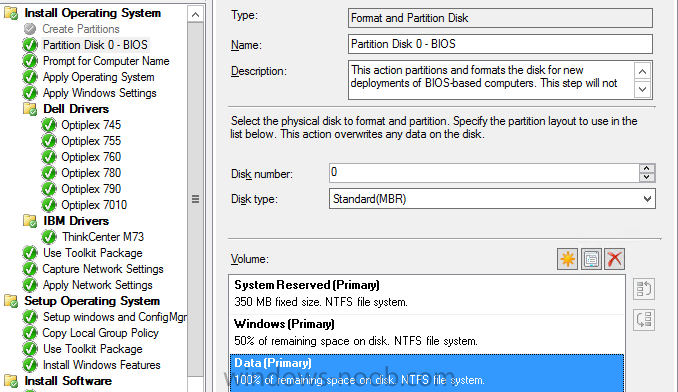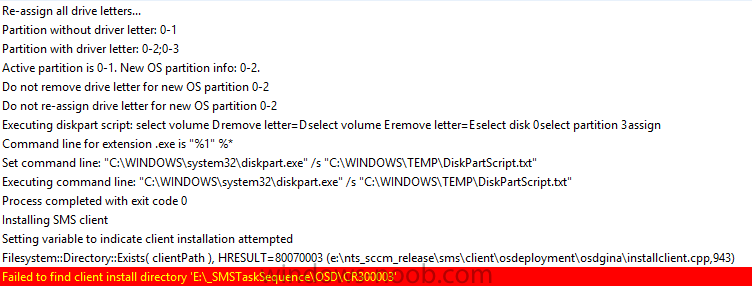Search the Community
Showing results for tags 'Diskpart'.
-
I have a laptop that has Disk 0 and Disk 1. Disk 1 is my D drive. Disk 0 is my issue. It is setup like this: OS C; 990 MB healthy recovery partition. 1.4GB healthy recover partition. My issue is I can't wipe out the Two recovery partitions. I want one huge 3GB drive. I don't ne...
-
Morning all, I’ve been looking at an issue for the last couple of days that has me somewhat confused. I know there have been other posts regarding this but I’ve not yet seen a definitive reason behind it… We have a small number of systems in the environment that have two physical drives for...
-
Secondart Partition and Drive Letter Assignment
Epitome posted a topic in Configuration Manager 2012
Hi guys, After developing my OSD process for my work and creating all my WIMs, the IT manager decided that it would be better for us to install the SCCM client and cache into a secondary partition in a hidden folder. Reason for this is we use DeepFreeze and the cache/config is getting wiped at... -
I work for a college and we have a windows 8 OS pre-existing in my lab. Those machines are frozen by DeepFreeze. I want to deploy another windows 8 OS to the same machines which will make them dual boot. We were using Ghost before and were able to do this by creating a separate partition and...
-
As the title suggests: I'm looking for guidance on how to wipe the MBR via Task Sequence during an OSD. Any suggestions? We use Symantec Encryption Desktop (aka PGP) and it adds a bootguard to the MBR which needs to be cleared out (we need to wipe the MBR) in order for the machines to boot success...
- 3 replies
-
- mbr
- master boot record
-
(and 4 more)
Tagged with:
-
Greetings All, I am having a bit of trouble creating a TS that creates two partitions. If I only have one it works perfectly as soon as I try and add the second the TS fails. I can see what is causing the failure but i don't know why. Let me know if any other info is needed. Desired Outcome:...
- 10 replies
-
- Configuration Manager
- 2012
-
(and 5 more)
Tagged with:
-
Alright guys I need some insight. I have been asked to come up with a way to clean a drive (using diskpart) during PE before the OSD password is entered. Now the catch is there has to be a way to opt out. Basically the powers that be want a pop-up that says "Do you want to clean the drive" with yes...




